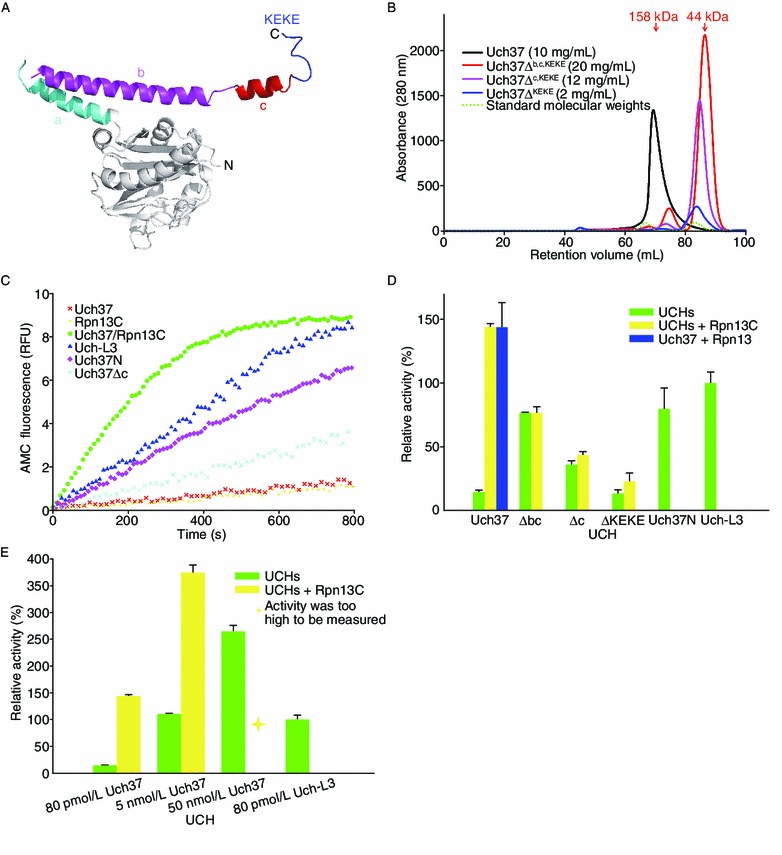Figure 4.

Deletion of the C-terminal region de-oligomerized and activated Uch37. (A) Cartoon of Uch37 depicting regions of the C-terminal extension region (helices a, b, and c and the KEKE motif). (B) Size exclusion profiles of the Uch37 truncations. The truncations of the C-terminal extension region had longer retention times than the full-length Uch37. Ovalbumin (44 kDa) and γ-globulin (158 kDa) were run as standards under identical conditions. The positions of the standards are marked with green arrows. (C–E) The activity of Uch37 in the presence or absence of the full-length Rpn13 or N-terminal truncated (Δ1−269) Rpn13C was measured using Ub-AMC as the substrate. The relative fluorescence units emitted by different constructs are shown as a function of time (C). Uch37 exhibited the highest activity in the presence of Rpn13. UCH-L3 was used as a control, with its activity considered to be 100 %. Uch37N, Δbc, Δc, and ΔKEKE represent the Uch37 catalytic domain, Uch37Δb,c,KEKE, Uch37Δc,KEKE, and Uch37ΔKEKE, respectively (D). (E) Uch37 at different concentrations could be activated by Rpn13C. The values are the average of three independent experiments; the error bars represent the standard error of the mean
